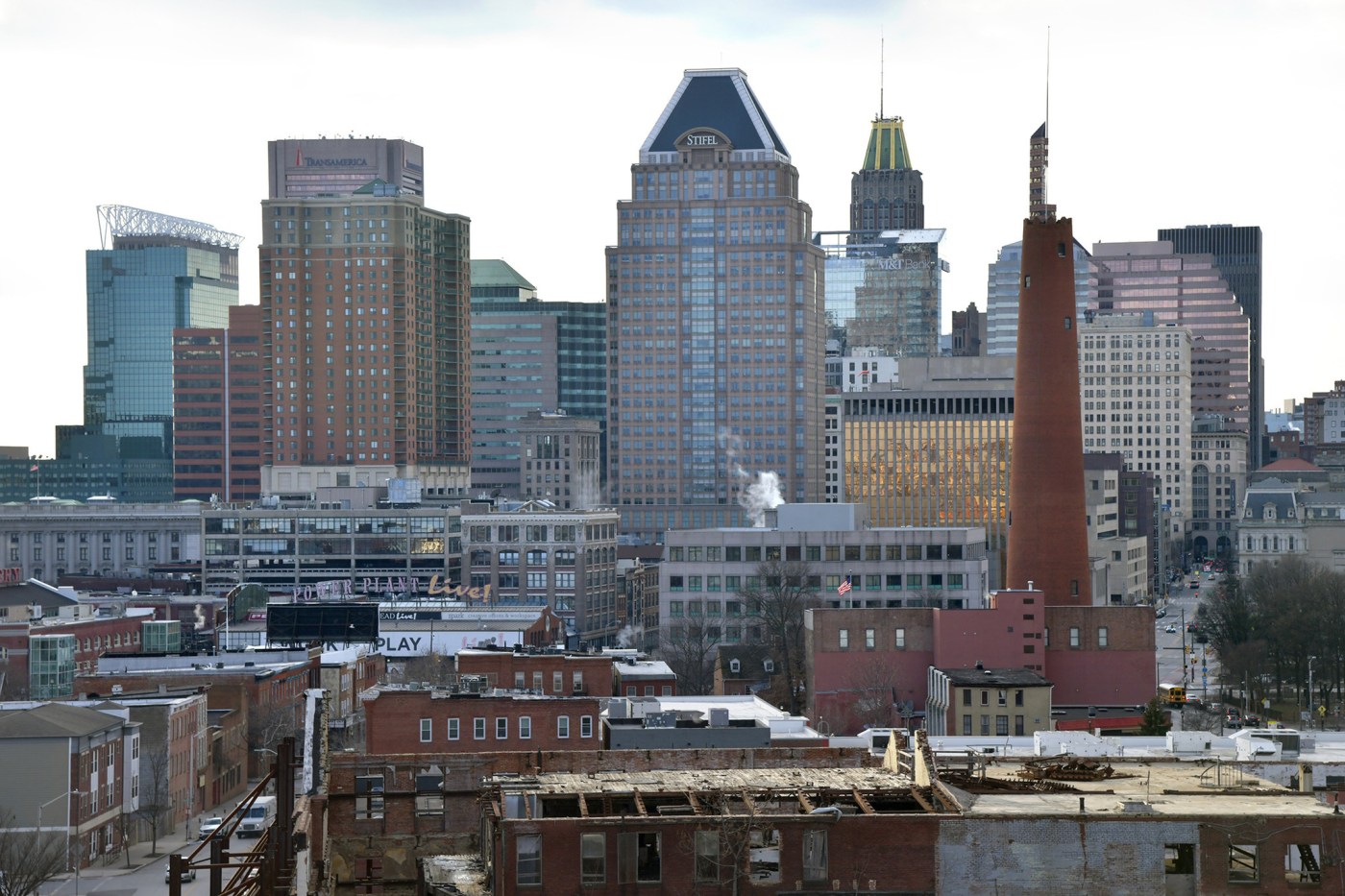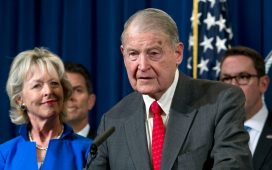The number of people working and living in downtown Baltimore grew last year, thanks to apartment conversions and office relocations, but the central business district still struggled with office vacancies as work-at-home policies expanded, a report released Wednesday showed.
The first of thousands of state workers have begun moving from the aging State Center complex in midtown to vacant spaces downtown, lifting employment to 133,950 jobs from 126,047 in 2022, according to the Downtown Partnership of Baltimore’s annual measure of the economy in a one-mile radius of Pratt and Light streets.
The number of residents in that area grew as well in 2023, to 41,066 from 39,168 the previous year, the partnership reported. The quasi-nonprofit group, which works to draw and retain businesses, property owners, residents, and employees downtown, planned to unveil the annual State of Downtown Baltimore report during a breakfast event Wednesday morning.
The city’s traditional business district has been part of a “shifting landscape of office use and the adoption of hybrid work practices,” the report said. “It’s a new reality to which other major cities across the United States and globally are also having to adapt as they consider how best to optimize investments of a previous era in order to define a new one.”
Downtown’s population and employment numbers ranked it 13th out of 25 of the largest U.S. metro areas, the report showed. Household income averaged nearly $104,000 in the one-mile radius, the 19th highest out of those 25 metro areas.
About 5,000 state workers will relocate downtown, including more than 350 employees of the Office of the Comptroller, who moved into 67,000-square-feet of renovated space on St. Paul Street in late January. The state’s largest agency, the Department of Human Services, will occupy more than 150,000 square feet at 25 S. Charles Street over the course of this year.
The top three employment sectors — health care; professional, scientific and technical services; and public administration — accounted for more than half of downtown’s jobs.
The office vacancy rate increased slightly to 20.03% from 19.76%, but rents also rose, to a range of $23 to $29 per square foot from $22 to $26 per square foot in 2022. Available office square footage decreased, showing that offices continue to be adapted for other uses.
Downtown’s office vacancy was higher than the 16.18% average in the metro area last year.
“A new concern relates to companies with a significant downtown footprint downsizing their square footage due to hybrid work policies,” the report said.
Most of the biggest lease transactions, besides those by state agencies, came from banks and law firms. CFG Bank took 90,000 square feet in Baltimore Peninsula, while DLA Piper and Semmes, Bowen and Semmes signed up for new space downtown.
Demand for downtown apartments remained strong. Another 6,243 units are planned through 2028, including up to 1,000 units that could be part of MCB Real Estate’s plans to redevelop Harborplace with new parks and retail. Apartment occupancy averaged 92.5% last year.
Several market-rate, rental apartment conversions opened last year, including Crook Horner Lofts on North Howard Street, Vivo Living Baltimore on West Fayette Street and 733 W. Pratt Street, at that address. Rent in Class A apartment buildings averaged $1,505 for a studio, $1,658 for a one-bedroom and $2,279 for a two-bedroom.
The report also looked at the hospitality sector, where the number of overnight visitors jumped nearly 15% to 11.7 million people. Figures from Smith Travel Research showed 151 hotel rooms under construction downtown last year, with 275 planned through the end of next year.
One of the bigger openings was Residence Inn by Marriott Baltimore Harbor Point on South Caroline Street, with 135 rooms.
Several hotels are being converted to apartments, including Embassy Suites by Hilton Baltimore Inner Harbor on St. Paul Street, planned for 300 apartments; Holiday Inn Baltimore Downtown Inner Harbor on West Fayette Street, under construction for 362 apartments, and Radisson Hotel Baltimore Downtown – Inner Harbor on West Fayette Street, which was completed with 323 units.
Downtown’s hotel occupancy rate of 56.8% remained below the national average of 63%.
The Downtown Partnership said a key focus will be continuing to attract retail, including restaurants. There was a slight decline in retail occupancy last year to 92.1%. The drop was driven by decreases in foot traffic and the growing popularity of online shopping, according to the partnership’s analysis. That compares with averages of 93.5% in the Baltimore metro area and 93.6% nationally. Total retail sales totaled more than $900 million within that one-mile radius of Pratt and Light streets.
Part of the Baltimore Mayor Brandon Scott’s “Downtown Rise” initiative will include a range of incentives to attract new retail to the district.






